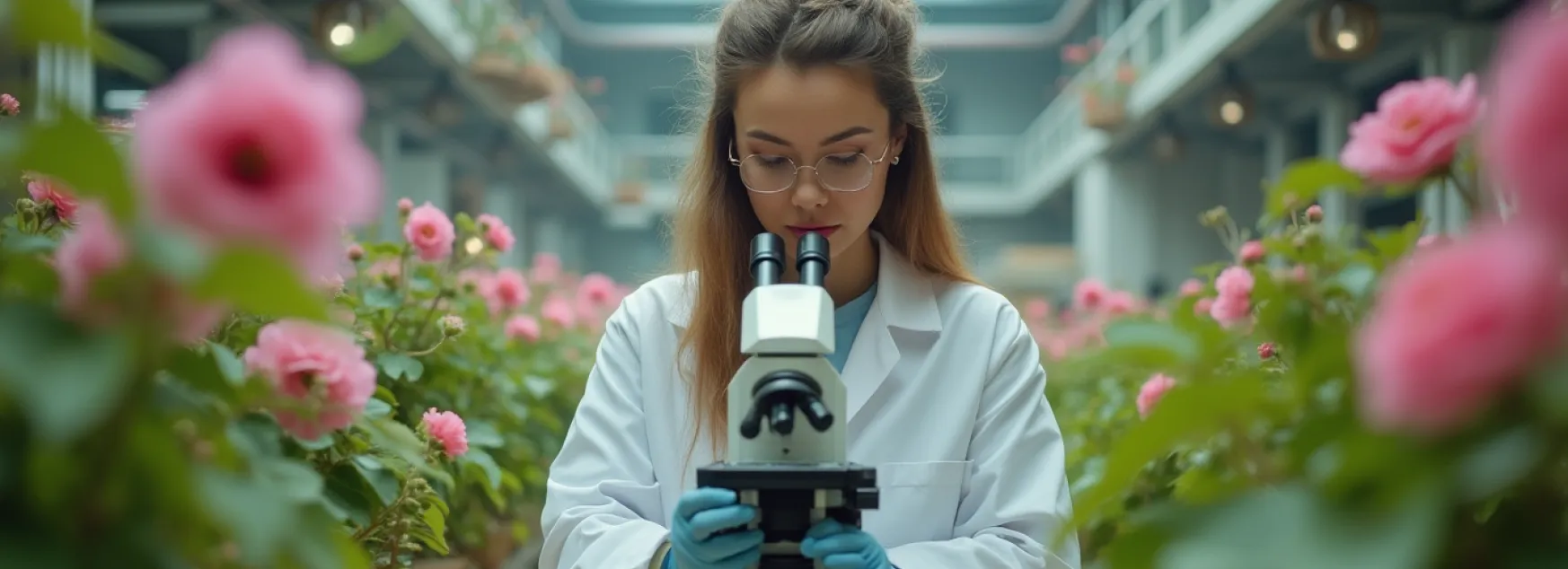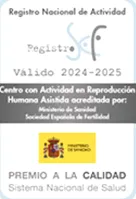In Vitro
Fertilisation (IVF)
What is
in vitro fertilisation?
In Vitro Fertilisation (IVF) Process and Technique
In Vitro Fertilisation (IVF) is an assisted reproduction treatment that imitates the moment of fertilisation outside the woman’s body. This treatment consists of joining spermatozoa, previously selected, with eggs in the laboratory using the IVF technique.
Creation of High Quality Embryos
Fertilisation is carried out in the laboratory in a totally controlled environment imitating the conditions of the woman’s uterus. This allows us to create higher quality embryos to place in the woman’s uterus, which increases the chances of achieving pregnancy.
SUCCESS RATE FIRST ATTEMPT
Success study gestational
Study that we provide you with prior to the treatment, so that you are aware of the possibilities you have to achieve a successful pregnancy in each cycle of In Vitro Fertilisation.
Fertility Studies

Ovarian stimulation
In the natural process of a woman’s menstrual cycle, women produce only one oocyte (egg) per month. By administering medication, what we aim to do in this first phase of In Vitro Fertilisation is to stimulate the ovary and induce the production of more oocytes.
If the creation of many oocytes is achieved, the possibility of gestation is greater as more embryos can be obtained. We monitor the evolution of this process through regular ultrasound checks, and sometimes blood tests.

Follicular puncture
When transvaginal ultrasound shows that the follicles are of adequate size to have produced a mature oocyte, follicular puncture is scheduled. A hormone is also administered to induce oocyte maturation in a similar way to the natural cycle.
Approximately 36 hours will have to pass between the medication and the puncture. The puncture is performed in the operating theatre, under sedation so that the woman does not feel any discomfort, and consists of extracting the mature oocytes, a process that lasts approximately 10-15 minutes.

In vitro fertilisation and embryo culture
Once the oocytes have been extracted by puncture, and with the spermatozoa previously selected from the couple, the oocytes are inseminated in the laboratory.
When fertilisation occurs, the embryos are left in culture for 5 to 6 days. During this time, embryologists monitor and evaluate the development of the embryos using timelapse incubators.

Embryo transfer
Embryo transfer is the last and decisive step. It is a crucial phase of the treatment.
The specialist prepares the patient’s uterus with medication and ensures that it has the correct thickness for embryo implantation. After 5 or 6 days of embryo culture, the best quality embryo is transferred to the uterus by means of a simple operation that is carried out in the operating theatre. The embryo is placed in the uterine cavity using a specific flexible catheter so as not to damage the walls of the uterine cavity. It does not require sedation as it is not a painful process.
After the embryo transfer, the patient will rest for a few minutes and can resume her daily activities, always in moderation.
The embryos left over from the process will be frozen, in order to avoid repeating the ovarian stimulation and follicular puncture process again, in the event that you do not get pregnant in the first IVF cycle.

Further processing
Approximately two weeks after the embryo transfer, a pregnancy test is performed by measuring beta-HCG in the blood. If the beta is positive, a control ultrasound is performed to confirm the gestational sac.
How long does in vitro fertilisation last?
IVF treatment lasts approximately 30 days, the time may vary depending on the time of the woman’s cycle. In addition, prior to the treatment, tests will be carried out so that the treatment is as personalised as possible. These tests are focused on achieving the couple’s dream, so the final duration may last depending on the situation of each patient.
When to use
in vitro fertilisation
(IVF)?
In Vitro Fertilisation treatment is one of the most sought after treatments when other fertility treatments, such as Artificial Insemination, have previously failed, and in patients with disorders such as:
Woman
Endometriosis
Fallopian Tube Lesion or Absence
Polycystic Ovary
Low Ovarian Reserve
Man
Low Sperm Count, Decreased Sperm Mobility or Abnormal Sperm Morphology
Infectious Disease
Vasectomy
LÍDERES EN REJUVENECIMIENTO OVÁRICO Y ENDOMETRIAL
QUÉDATE EMBARAZADA CON TUS PROPIOS ÓVULOS
REJUVENECIMIENTO OVÁRICO
El Rejuvenecimiento Ovárico es un tratamiento específico para mejorar la cantidad de los óvulos de la paciente. Consiste en inyectar en los ovarios una infusión de plasma rico en factores de crecimiento, obtenido a partir de las plaquetas de la propia sangre de la paciente.
CÁMARAS HIPERBÁRICAS
La medicina hiperbárica utiliza el oxígeno hiperbárico a una presión más alta de lo normal favoreciendo el aumento de la concentración de oxígeno en la sangre del paciente. En fertilidad hay estudios tanto para él como para ella que demuestran que el oxígeno hiperbárico beneficia a la fertilidad.
REJUVENECIMIENTO DEL ÚTERO
El plasma rico en factores de crecimiento también es beneficioso para el útero por sus propiedades regenerativas y reparadoras. Se obtiene a partir de las plaquetas de la propia sangre de la paciente, concentrando todos los factores en una pequeña porción de plasma para después infusionar en el útero.
¿CUÁNDO DE VEN LOS RESULTADOS?
Los resultados después de la primera inyección de plasma se podrán notar en el primer ciclo de FIV consecutivo, pero dependiendo de la paciente es posible que necesite un segundo tratamiento de plasma rico en factores de crecimiento.
LEADERS IN OVARIAN AND ENDOMETRIAL REJUVENATION
GET PREGNANT WITH YOUR OWN EGGS
OVARIAN REJUVENATION
Ovarian Rejuvenation is a specific treatment to improve the quantity of the patient’s eggs. It consists of injecting an infusion of plasma rich in growth factors, obtained from the patient’s own blood platelets, into the ovaries.
HYPERBARIC CHAMBERS
Hyperbaric medicine uses hyperbaric oxygen at a higher pressure than normal to increase the concentration of oxygen in the patient’s blood. In fertility there are studies for both men and women that show that hyperbaric oxygen benefits fertility.
REJUVENATION OF THE UTERUS
Plasma rich in growth factors is also beneficial for the uterus due to its regenerative and reparative properties. It is obtained from the patient’s own blood platelets, concentrating all the factors in a small portion of plasma and then infused into the uterus.
WHEN WILL THE RESULTS BE SEEN?
The results after the first plasma injection may be noticeable in the first consecutive IVF cycle, but depending on the patient, a second treatment of plasma rich in growth factors may be needed.

PLAN EVA
FINANCE YOUR PREGNANCY AT 100%
We know that every treatment involves an emotional and financial cost. That’s why we finance your pregnancy interest-free.
Faqs
How many IVF cycles can be done?
It depends on the individual patient. In our IVF clinic we guide patients to know how many cycles can be performed and when to start a second cycle in case the first one is unsuccessful.
Can In Vitro Fertilisation be used to have twins?
No. IVF can increase the likelihood of having twins if two embryos are transferred, but not of having twins.
Can I choose the sex of my baby through IVF?
No. En España la elección de sexo no es legal.
I have a tubal ligation, can I have IVF?
Yes, this assisted reproduction treatment is designed for women who have had a tubal ligation and wish to become pregnant..
I have a vasectomy, can I use IVF?
Yes, men with a vasectomy can have an IVF procedure.

